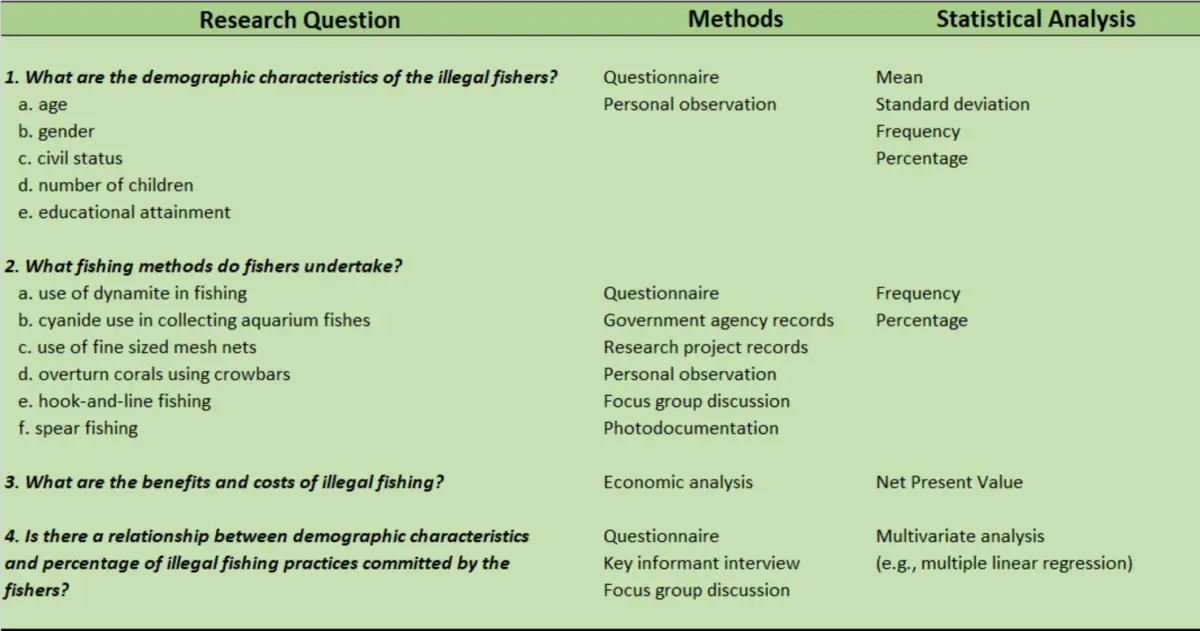Is there a way to simplify the preparation of your research or thesis proposal without leaving out the important items to include in its preparation? This article provides four steps that will guide you on how to write your research proposal. Try the matrix approach described and explained in this easy to understand article and reap the benefits.
You may find yourself getting into the trouble of writing and rewriting your thesis proposal because you tend to miss important details pertinent to what you intend to investigate and how you will go about it. Research or thesis proposal preparation is very time-consuming and can cause undue worry, especially if you have set a fixed time frame to finish your thesis. If you desire to have your research proposal approved soonest so you can start gathering the data you need, this is for you.
A systematic way of ensuring that everything is well addressed or covered fully in your research paper is possible using a matrix. This technique is most appropriate when you want to ensure that you have adequate preparation, especially the proper methods to answer the research questions.
What is a matrix?
My students would mull at me every time I tell them about using a matrix to do their research work in a more ordered, straightforward, or effective manner. Matrix is a not-so-common technical term to most of them. (Maybe it means just the title of a movie to them?) Although they usually wouldn’t ask, I follow-up with an explanation of what a matrix means.
I would then scrounge for a clean sheet of paper or anything that can serve the purpose to illustrate how a matrix can be used to set one’s mind into focus. A matrix is a table with rows and columns.
Four Steps on How to Write Your Research Proposal
It always pays to be systematic when you do something—in this case, being organized when you write your research proposal. A simple guide always works.
The matrix technique on how to write your research proposal will work great for you, just like the numerous students I mentored in two decades. I enumerate the four steps that you can easily follow.
1. Prepare a table with the following headings for each column:
- research question,
- methodology, and
- statistical analysis.
You may fold the sheet of paper into three equal-sized columns or draw a line downwards to separate each column.
2. List the research questions
Under the heading “Research Question,” write the series of research questions that you intend to pursue in their logical order. Logical order means that you arrange research questions chronologically. It is ordered so that answering the first question will facilitate the resolution of the next question.
3. Supply the required methods to answer the research questions
Under the heading “Methods,” look at the left column and think about how you would go about answering the research question. Methods refer to the specific things you will do to collect data.
List all the things you will do to provide the information required to answer the first question, the second one, the third, and so on. As you finish writing the methods portion, place a line beneath to separate the questions and the corresponding research instrument to gather the data.
4. Select the appropriate statistical tool
Under the third column with the heading “Statistical Analysis,” recall your statistics lessons or consult a statistician about the correct statistical tool to analyze the facts gathered in the study. Does the research question need simple descriptive statistics such as mean, median, mode, or percentages? Or do you need to apply a correlation analysis, a test of the difference between means, or a multivariate analysis? You can also add the corresponding graphs or tables under this column that you will need for a better discussion of the findings.
Now, guided by your matrix, you will be able to answer your research questions with confidence. You make sure that everything is covered by setting a one-to-one correspondence in the research proposal’s crucial elements, i.e., the research questions, the methodology, and the corresponding statistical analysis.
An example is given below to show the matrix on how to write your research proposal. The research topic is about illegal fishing, a practice rampant in many places where effective policy is needed to regulate or minimize unlawful activities.

That wraps it up. Try it and be more systematic in preparing your research proposal.
But before you go, please read the final note in the next section.
Check Correspondence of the Matrix with the Study’s Conceptual Framework
The next step is to check whether the variables that you included in your research proposal are compatible with your research’s conceptual framework. If not, you must revise your research proposal based on what you mean with the conceptual framework as your guide.
Click the “S” icon if you need help along this concern.
© 2013 December 4 P. A. Regoniel
Updated: 18 November 2020
[cite]


How to make a research matrix..and when it related to?
Thanks. It would be better to put the research title for the example to compare with the questions in the table. Second, I understand that methodology is the descriptive method or experimental method that is the nature of the research while the questionnaires and observations are tools.
Dear Ibrahim, thank you for pointing that out. I just returned to this article and saw your comment. I made the appropriate changes. I believe it looks better now.